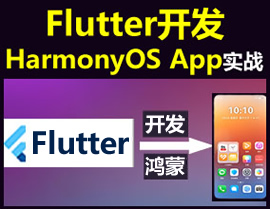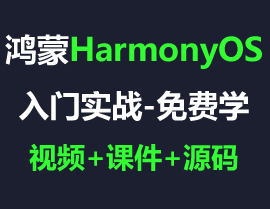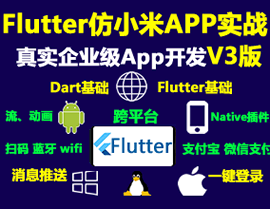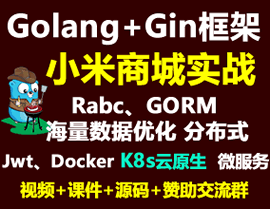Flutter智能对话插件gptbot的功能使用
Flutter智能对话插件gptbot的功能使用
Features(功能)
该插件允许您仅通过提供API密钥即可集成Chatgpt。
1. Depend on it(依赖插件)
在您的项目pubspec.yaml文件中添加以下内容:
dependencies:
gptbot: ^0.0.12. Install it(安装插件)
可以通过命令行安装插件:
使用pub命令:
pub get使用Flutter命令:
flutter pub get3. Import it(导入插件)
在Dart代码中使用以下方式导入插件:
import 'package:gptbot/gptbot';Usage(使用方法)
GptBot 是一个Widget,它允许您通过仅提供API密钥来集成Chatgpt,从而节省集成整个方法的时间。当您想要使用Chatgpt时,可以这样使用:
class Bot extends StatelessWidget {
const Bot({super.key});
[@override](/user/override)
Widget build(BuildContext context) {
// 使用GptBot并传入API密钥
return const Scaffold(
body: Gpt_flutter(apiKey: APIKey.apiKey),
);
}
}参数说明
apiKey:您需要的API密钥,用于获取Chatgpt的响应。
完整示例代码
以下是一个完整的示例代码,展示如何使用gptbot插件创建一个简单的聊天界面:
import 'package:flutter/material.dart';
import 'package:gptbot/gptbot';
void main() {
runApp(MyApp());
}
class MyApp extends StatelessWidget {
[@override](/user/override)
Widget build(BuildContext context) {
return MaterialApp(
home: Bot(),
);
}
}
class Bot extends StatelessWidget {
const Bot({super.key});
[@override](/user/override)
Widget build(BuildContext context) {
return Scaffold(
appBar: AppBar(
title: Text('Chat with GPT'),
),
body: Gpt_flutter(apiKey: "your_api_key_here"),
);
}
}更多关于Flutter智能对话插件gptbot的功能使用的实战系列教程也可以访问 https://www.itying.com/category-92-b0.html
更多关于Flutter智能对话插件gptbot的功能使用的实战系列教程也可以访问 https://www.itying.com/category-92-b0.html
gptbot 是一个基于 Flutter 的智能对话插件,它允许开发者在 Flutter 应用中集成 GPT(Generative Pre-trained Transformer)模型的对话功能。通过 gptbot,开发者可以轻松实现与用户的自然语言交互,提供智能问答、聊天机器人等功能。
主要功能
- 自然语言处理:利用 GPT 模型进行自然语言理解和生成,实现与用户的智能对话。
- 多轮对话:支持上下文感知的多轮对话,能够根据之前的对话内容生成连贯的回复。
- 自定义配置:允许开发者自定义模型参数、对话风格、回复长度等。
- 异步处理:支持异步调用,确保对话过程不会阻塞主线程。
- 多语言支持:支持多种语言的对话,具体取决于所使用的 GPT 模型。
- 错误处理:提供错误处理机制,确保在模型调用失败时能够优雅地处理异常。
使用步骤
1. 添加依赖
首先,在 pubspec.yaml 文件中添加 gptbot 插件的依赖:
dependencies:
flutter:
sdk: flutter
gptbot: ^1.0.0 # 请使用最新版本然后运行 flutter pub get 来安装依赖。
2. 初始化插件
在 Flutter 应用的 main.dart 文件中初始化 gptbot 插件:
import 'package:flutter/material.dart';
import 'package:gptbot/gptbot.dart';
void main() {
runApp(MyApp());
}
class MyApp extends StatelessWidget {
@override
Widget build(BuildContext context) {
return MaterialApp(
title: 'GPTBot Example',
theme: ThemeData(
primarySwatch: Colors.blue,
),
home: GPTBotExample(),
);
}
}
class GPTBotExample extends StatefulWidget {
@override
_GPTBotExampleState createState() => _GPTBotExampleState();
}
class _GPTBotExampleState extends State<GPTBotExample> {
final GPTBot _gptBot = GPTBot(apiKey: 'YOUR_API_KEY'); // 替换为你的 API Key
@override
Widget build(BuildContext context) {
return Scaffold(
appBar: AppBar(
title: Text('GPTBot Example'),
),
body: Center(
child: Column(
mainAxisAlignment: MainAxisAlignment.center,
children: <Widget>[
ElevatedButton(
onPressed: _startConversation,
child: Text('Start Conversation'),
),
],
),
),
);
}
void _startConversation() async {
try {
String response = await _gptBot.sendMessage('Hello, how are you?');
print('GPTBot Response: $response');
} catch (e) {
print('Error: $e');
}
}
}3. 发送消息并获取回复
在上面的代码中,_startConversation 方法通过 _gptBot.sendMessage 发送一条消息并获取 GPT 模型的回复。你可以根据需要自定义消息内容和处理回复的逻辑。
4. 自定义配置
gptbot 插件允许你自定义一些参数,例如:
final GPTBot _gptBot = GPTBot(
apiKey: 'YOUR_API_KEY',
model: 'gpt-3.5-turbo', // 选择模型
maxTokens: 100, // 最大回复长度
temperature: 0.7, // 控制生成文本的随机性
);5. 处理多轮对话
gptbot 支持多轮对话,你可以通过维护一个对话历史来实现上下文感知的对话:
List<Map<String, String>> conversationHistory = [];
void _startConversation() async {
conversationHistory.add({'role': 'user', 'content': 'Hello, how are you?'});
try {
String response = await _gptBot.sendMessage(conversationHistory);
conversationHistory.add({'role': 'assistant', 'content': response});
print('GPTBot Response: $response');
} catch (e) {
print('Error: $e');
}
}







